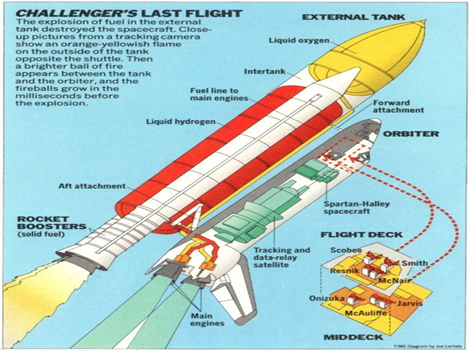Science and Technology
Context: NASA has announced the recovery of debris from the Challenger spaceship that exploded 73 seconds after lift-off killing all seven astronauts aboard 37 years ago.
About the mission:
- The shuttle mission, which was NASA’s 25th, was supposed to be a six-day mission wherein, the seven-member crew was to deploy a large communications satellite, deploy and retrieve an astronomy payload to study Halley’s Comet.
- A teacher, also the first civilian to head to space, was to conduct lessons for schoolchildren from orbit.
- The primary objective of the STS-51L mission was to launch the second Tracking and Data Relay System (TDRS) satellite into orbit.

The Space shuttle disaster:
- The spacecraft broke apart on January 28, 1986 after it suffered a major malfunction less than 2 minutes into its flight with investigations revealing freezing temperatures having affected the integrity of O-ring seals in the solid rocket booster segment joints.
- The O-ring seals are used to keep fluids from leaking and components sealed.
- Ice had formed on the shuttle amid freezing temperatures as Challenger remained on the launch pad overnight.
- The last Challenger mission was dubbed as STS-51L.
Source: Indian Express
Previous Year Question
Q.1) If a major solar storm (solar flare) reaches the Earth, which of the following are the possible effects on the Earth? (2022)
- GPS and navigation systems could fail.
- Tsunamis could occur at equatorial regions.
- Power grids could be damaged.
- Intense auroras could occur over much of the Earth.
- Forest fires could take place over much of the planet.
- Orbits of the satellites could be disturbed.
- Shortwave radio communication of the aircraft flying over polar regions could be interrupted.
Select the correct answer using the code given below:
- 1, 2, 4 and 5 only
- 2, 3, 5, 6 and 7 only
- 1, 3, 4, 6 and 7 only
- 1, 2, 3, 4, 5, 6 and 7














